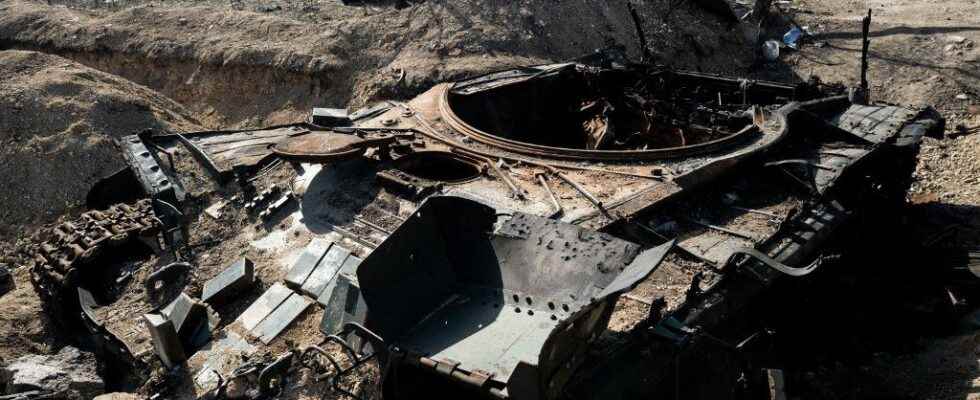Proudly enthroned on his platform lined with Russian flags, Vladimir Putin wanted to be confident on February 21, three days before the first anniversary of his attempted invasion of Ukraine. “We are going to settle step by step, carefully and methodically, the objectives that arise before us […] It is impossible to beat Russia”, boasted the head of the Kremlin, during his speech on the state of the nation. On the ground, however, the result of his “great offensive” – feared for months by the Ukrainian authorities – struggling to convince.
Contrary to its initial invasion, Moscow multiplied its assaults in the regions of Donetsk, Luhansk, Kharkiv and Zaporijia in February. The new offensive “has begun”, confirmed NATO Secretary General Jens Stoltenberg on the 13th, emphasizing the dispatch of “thousands of additional troops”. Whose slow progress comes at the cost of heavy losses. “The Russians have regained the initiative, but it’s essentially nibbling: they can’t manage to break through the Ukrainian defense lines, summarizes General (2S) Jérôme Pellistrandi, editor-in-chief of the National Defense Review. They seize some small villages, which do not have a great tactical value.”
Hecatomb in Vouhledar
Witness the fiasco of the attack on Vouhledar, a small town in Donetsk Oblast, launched at the beginning of the month by the 155th Russian Marine Brigade – considered an elite unit. “Almost the whole brigade was wiped out […] they lost more than 1,000 people in two days,” Defense Minister Ben Wallace said in mid-February. And the losses are not only human. According to the Ukrainian army, Russia also lost 130 armored vehicles in the assault, including 36 tanks.
“It was wrong to believe that Russia could still launch a major offensive like that of February 24, 2022, because in reality it no longer has the capabilities, believes Léo Péria-Peigné, arms researcher and prospective at the French Institute of International Relations. The best of the Russian army was lost in the first months of the war.” A loss of know-how that has not yet been compensated by the mobilization of around 300,000 men since September.
According to British intelligence, the total number of losses in the Russian camp would be between 175,000 and 200,000 (dead, wounded, captured) since the beginning of the conflict, including 40,000 to 60,000 killed. Another estimate released in mid-February by the International Institute for Strategic Studies indicates that Russia would have lost more than 2,000 tanks in Ukraine, or half of its operational fleet.
Another painful symbol: the head of the regional military administration of Luhansk, Sergei Gaïdaï, affirmed – supporting photo – that the Ukrainian forces shot down this month in Kreminna, for the first time, a BMPT Terminator, a combat vehicle considered one of the jewels of the Russian defense industry. “This is rare material that we had hardly seen since the beginning of the conflict because the Russians kept it in reserve, slips Léo Péria-Peigné. The fact that we see it today tends to show let them throw everything they have into the battle.”
“The Russians have lost a lot of equipment”
“The great Russian offensive is going so well that no one realizes it,” Ukrainian intelligence chief Kyrylo Budanov quipped on February 22 in an interview with Forbes. According to the senior officer, the stocks of Russian shells would also have fallen to 30% of their total number. At the beginning of January, the general had already reported a marked drop in the number of Russian fire, from 60,000 shells and rockets per day at the start of the invasion to 20,000 today.
“The Russians have lost a lot of equipment and can no longer field as much as before, nor of such good quality, underlines General Dominique Trinquand, military expert and former head of the French mission to the UN. expect a cavalcade of tanks streaking across the Ukrainian plains, but rather a methodical advance under cover of artillery.” The end of the winter period may not help the affairs of the Russian forces. With the thawing of the ground, the harsh winter will soon give way to the mud of the “raspoutitsa” (the time of bad roads, in Russian), which complicates the movement of armored vehicles.
Can Russia still hope for more significant gains? “We cannot exclude a concentration of efforts on a particular point to unblock the tactical situation, warns General Pellistrandi cautiously. And we can clearly see that Putin now registers this war in the long term.
